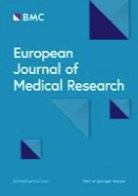Extended liver resection in mice: state of the art and pitfalls

Rodent models of liver resection have been used to investigate and evaluate the liver's complex physiology and pathology since 1931. First documented by Higgins and Anderson, such models were created to understand liver regeneration mechanisms to improve outcomes in patients undergoing extensive liver resection for liver cancer or other underlying liver diseases. A systematic search was conducted using Pubmed, gathering publications up to January 2019, which engaged with the mouse model of extended liver resection as a method itself. The results of this search were filtered according to their language, novelty, and relevancy.
Through the overview, laid out in the selected publications, this paper reviews the shift of the extended liver resection model from rat to the mouse, describes the state of the art in the experimental setting, and discusses the possible limitations and pitfalls. Clearly, the extended liver resection in mice is a reproducible, practical and easy to learn method.
Authors are Can Kamali, Kaan Kamali, Philipp Brunnbauer, Katrin Splith, Johann Pratschke, Moritz Schmelzle, and Felix Krenzien.

